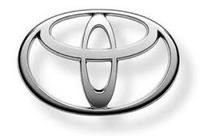News from Toyota
TOKYO, Japan -- 13 June, 2011: Toyota to add wrong-way alert to navigation systems
Toyota in Japan is adding a new function to its onboard navigation systems that gives voice and on-screen alerts when a driver drives the wrong way on major routes and slip roads and at junctions and toll booths.
The technology, developed with Aisin AW and Denso, will be incorporated in optional dealer-fit systems from 1 June. It has been made possible by advances in communications-based map-updating technology and pinpoint position recognition that uses information from GPS, gyro, vehicle speed and other sensors to accurately determine vehicle movement.
Introducing Toyota Friend social network
Toyota has formed a strategic alliance with Salesforce.com to create Toyota Friend, a private social network for Toyota customers and their cars. The network will be powered by Salesforce Chatter, a network used by businesses, and will be offered first in Japan. Initially its focus will be electric and plug-in hybrid vehicles, due from 2012.
Toyota Friend will enable Toyota customers to connect with their vehicles, their dealership and with Toyota itself. It will provide information on products and services and maintenance tips. For example, if an EV or PHV is running low on battery power, Toyota Friend would send the driver a Tweet-like alert to recharge. As a private network, users will also be able to extend communication to family, friends and others through public networks such as Facebook and Twitter. The service will be also be accessible through smartphones, tablets and other advanced mobile devices.
Toyota develops tropospheric ozone concentration simulator
Toyota is helping to combat global warming with the development of a simulator that can predict concentrations of tropospheric ozone – the main cause of photochemical smog – across south and east Asia. Tropospheric ozone, found in an atmospheric belt 10km above the earth’s surface, is also a greenhouse gas, contributing to global warming.
The project was carried out in conjunction with international organisations and academic bodies and will help in the development of future energy policies to reduce the harmful effects of the gas on human and plant health.
Predicting tropospheric ozone concentrations is difficult, because the gas is not emitted directly into the atmosphere, but is formed in the air by photochemical reactions involving nitrogen oxides (NOx) and volatile organic compounds (VOCs). The simulator uses a method based on energy consumption under current conditions in individual countries in the region; CO2, NOx and VOC emissions; and a three-dimensional air quality model that predicts tropospheric ozone concentrations, while also taking weather conditions into account.



